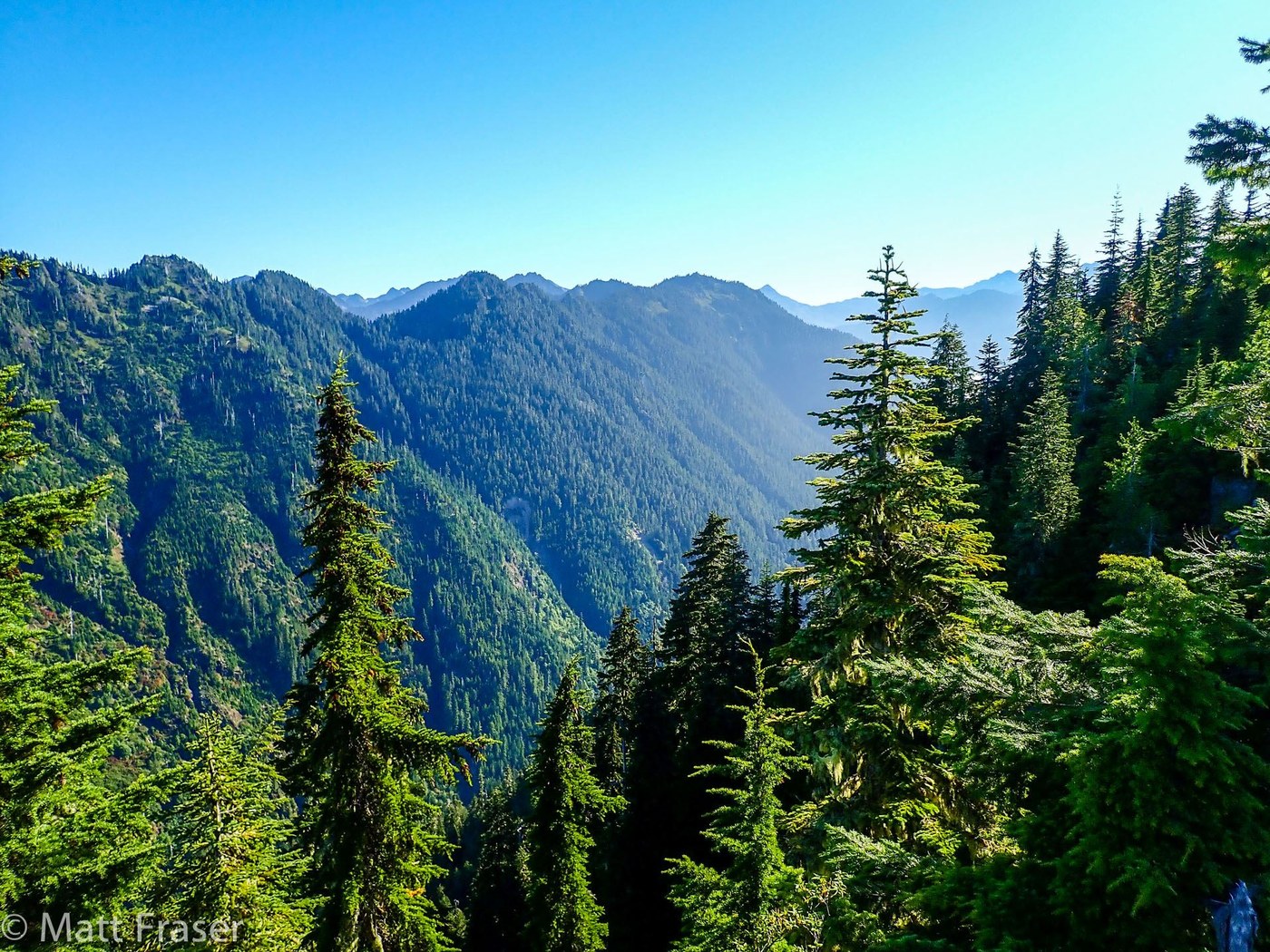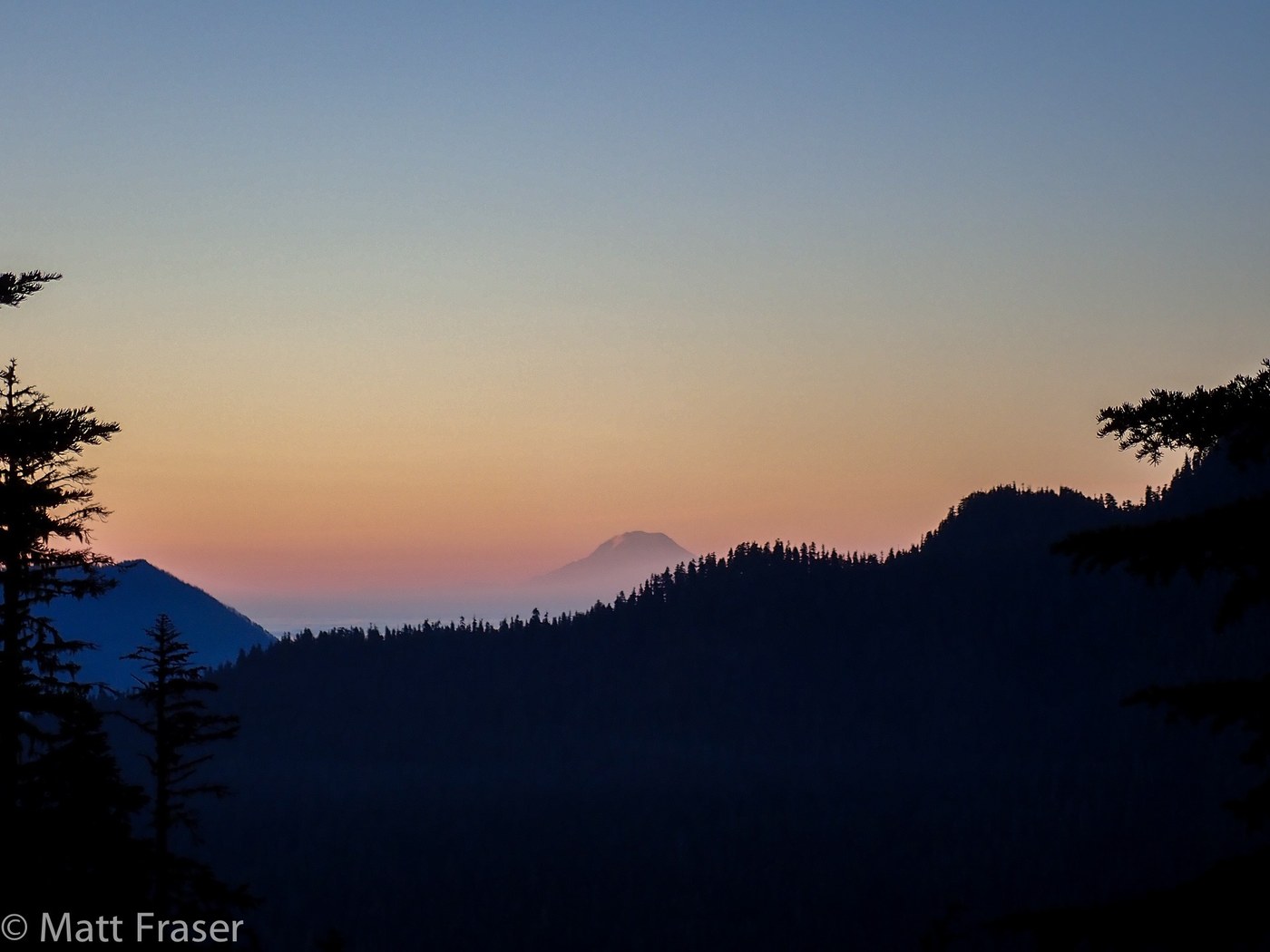At the present time, Six Ridge is more of a route than a trail, at times difficult to follow without a keen eye for flags, tags, or century-old blazes. In many places it is almost completely overgrown with blueberry or huckleberry bushes, and in others downed trees either partially block the way or obscure the trail. Be prepared for some route-finding, and occasionally having to backtrack a few yards when you realize you've followed the wrong elk track.
It also seems to defy the conventional wisdom on switchbacks, at times simply heading straight up a steep slope, or "elevator shafts" as my companion Mace calls them -- except there's no elevator, you just get the shaft!
The good news about all that: WTA is actively working on the trail, and there are some upcoming BCRTs that should do wonders for removing a few of these obstacles.
The official trip description seems to underestimate the trail, too. Based on our map-reading, we think it's more like 27 miles, not 21. Perhaps the official number doesn't count the final 6 miles on easy, well-groomed, National Park trails in the Staircase area? Also, while I'm not sure of the total elevation gain, you gain it all quite quickly on the climb up to Sundown Pass -- and then you lose a lot of it heading down to Sundown Lake, only to gain it again and more heading up to Six Ridge Pass, and then lose a bunch as you head down to Grady Lakes, then gain that back climbing up to Belview Camp, and the next day climbing some more back up to the crest of Six Ridge, which you then traverse for a number of miles before dropping down steeply toward Seven Stream and the North Fork Skokomish. There's a lot of up-and-down in there, with three ridgeline crossings.
So... that may sound like I'm trying to put you off of this trail, but what I'm really saying is that you will work hard for your payoff, yet there is indeed a payoff. You will be in very young mountains, not yet much eroded, and thus with steep sides, narrow crests, and deep ravines between them. Once you attain Sundown Pass, from that point forward you have never-ending views of this remote backcountry terrain. You'll cross from one watershed draining into Hood Canal to another that drains into the Quinault and the Pacific, and then back again. You'll gaze upon high valleys on neighboring ridge lines that likely were last visited by surveyors, who knows when.
And speaking of surveyors, you will follow the historic route of the O'Neill party from the 1890s, often using their tree blazes to find your own way, literally in their footsteps.
You may not see another human being for the better part of two days, until you drop down to the North Fork Skokomish and are on approach to Staircase.
From the Upper South Fork Skokomish to Belview Camp there are plenty of streams and lakes from which to refill your water containers, including a nice stream right in camp itself. After Belview, however, you must be prepared to carry all the water you need to carry you through until you reach the confluence of Seven Stream and the North Fork Skokomish.
The berries are out in full bloom right now, often growing right across the trail. This means the bears are all well-fed and not at all interested in you. We didn't see any bears, but we did see blue scat. We also saw plenty of evidence of a cougar using the trail as his personal route along the South Fork Skokomish as far as Startup Creek. Otherwise, the only macrofauna we encountered was a single elk.
Microfauna, on the other hand... while bugs in general were not bad, there are a number of yellowjacket nests along the trail, and we had the misfortune to accidentally disturb one, resulting in two of us getting stung. Keep an eye out.
Mosquitoes were not an issue on the trail or in camp, but they were in the Staircase parking lot!
Chanterelles are also popping up in great numbers right now, and plenty are to be found, especially during the descent down to Seven Stream.
If you're looking for a challenge, some solitude, some remoteness, and some sweeping vistas, Six Ridge just may be the route for you.







Comments